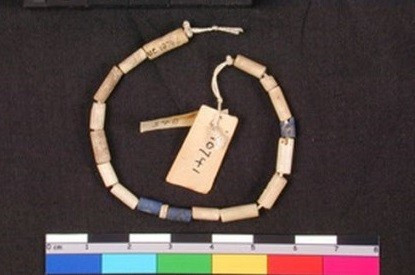Ancient Egyptians Made Jewellery from Meteorites, Confirm Researchers

A set of funeral beads which could be the oldest iron artefacts on earth actually came from outer space, archaeologists have claimed.
The nine iron beads, which were found in a 5000-year-old Egyptian cemetery in 1911, were made from a meteorite that crashed to earth around 3200 BC, according to a study published in the Journal of Archaeological Science.
The latest study builds on an earlier report, published in May, which suggested that the beads were crafted from meteorite rock.
"These beads were made from meteoritic iron, and shaped by careful hammering [of] the metal into thin sheets before rolling them into tubes," researchers noted in the study report, adding that neutron and X-ray scanning of the iron beads proved that the metal came from a meteorite.
The beaded jewellery was originally discovered in two burial sites in Gerzeh, northern Egypt, by British archaeologists before the First World War, and are today stored at University College London's Petrie Museum.
The iron was strung into a necklace together with other exotic minerals such as lapis lazuli, gold and carnelian.
The findings suggest that iron and metal works were much advanced in the ancient Egypt than previously thought.
"The results confirm that already in the fourth millennium BC metalworkers had mastered the smithing of meteoritic iron, an iron–nickel alloy much harder and more brittle than the more commonly worked copper. This is of wider significance as it demonstrates that metalworkers had already nearly two millennia of experience to hot-work meteoritic iron when iron smelting was introduced," the researchers concluded.
© Copyright IBTimes 2025. All rights reserved.






















